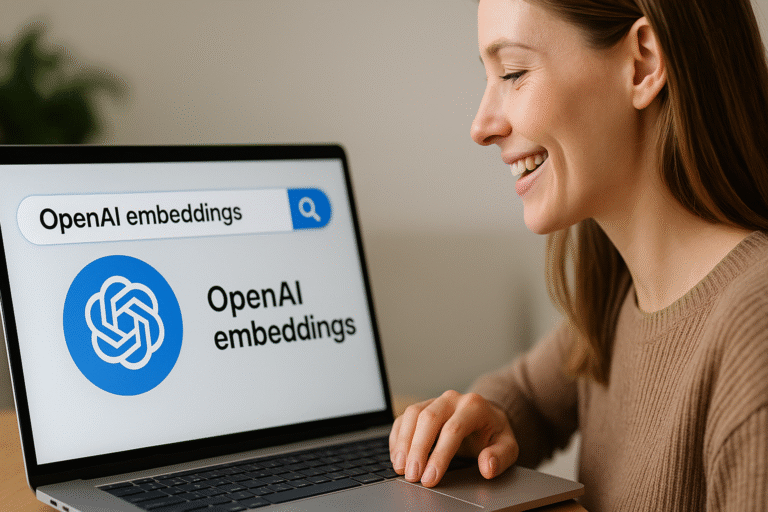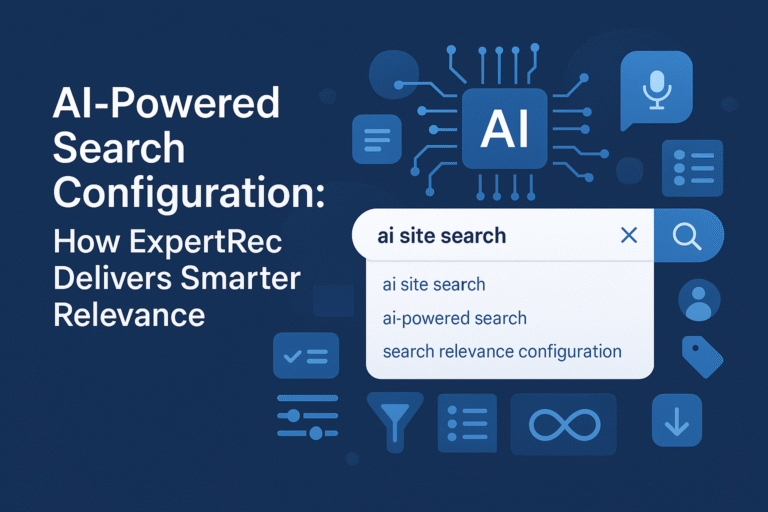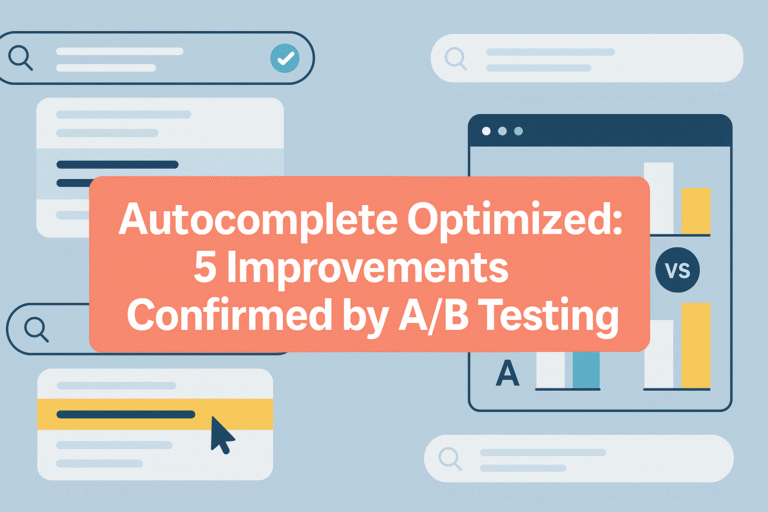Search, recommendation, and content understanding have taken a massive leap forward with the rise of embeddings dense vector representations that capture semantic meaning. Among the most powerful of these are OpenAI embeddings, which fuel everything from AI chatbots to advanced semantic search engines. These embeddings enable machines to understand not just what a query says, but what it means.
In this blog, we’ll explore what OpenAI embeddings are, how they work, their practical use cases, whether they’re the right solution for your business, and how Expertrec helps implement embedding-based search without the complexity.
What Are OpenAI Embeddings?
OpenAI embeddings are numerical vector representations of text generated using OpenAI’s language models (like text-embedding-ada-002). Each embedding is a high-dimensional array of numbers that captures the contextual meaning of the input.
Instead of matching keywords, embedding-based systems measure semantic similarity which allows for powerful applications like:
-
Matching product descriptions to user queries
-
Clustering related documents
-
Enabling natural language search
-
Personalized content recommendation
For example:
-
“Cheap laptops under $500” and “budget notebooks below 500 dollars” may look different in keywords, but OpenAI embeddings will place them close in the vector space due to semantic similarity.
How OpenAI Embeddings Work
At a technical level, OpenAI embeddings are generated from transformer-based models trained on diverse textual corpora. Here’s how the process typically flows:
1. Text Input
The input can be anything product name, user query, blog content, etc.
2. Tokenization
Text is tokenized into smaller components using a tokenizer like GPT’s byte-pair encoding (BPE).
3. Transformer Processing
The tokens pass through multiple self-attention layers of a pretrained model like text-embedding-ada-002.
4. Vector Generation
The final output is a dense vector (typically 1536 dimensions for ADA v2) that numerically represents the meaning of the original text.
5. Similarity Comparison
These vectors are compared using cosine similarity or Euclidean distance to identify semantically close matches.
This allows businesses to use embeddings for semantic search, clustering, classification, summarization, or anomaly detection.
Use Cases of OpenAI Embeddings
OpenAI embeddings power various real-world applications:
1. Semantic Search
Enable natural language search where users don’t need to guess the right keywords. For example:
-
“Men’s running shoes for flat feet” retrieves relevant results even if no product uses that exact phrase.
2. Product Recommendations
Match products based on vector proximity instead of predefined rules or filters.
3. Duplicate Content Detection
Identify semantically similar pages, reducing SEO penalties.
4. Customer Support
Power AI chatbots and ticket categorization systems by comparing user queries with historical support responses.
5. Knowledge Management
Cluster and tag enterprise documents using embeddings to automate knowledge discovery.
Is It Worth Using OpenAI Embeddings?
OpenAI embeddings offer immense benefits, especially for organizations looking to scale intelligent search, personalization, or document understanding. But are they always the best fit?
Pros:
-
High semantic accuracy
-
Out-of-the-box quality with minimal training
-
Massive scale support
-
Multilingual capabilities
-
Consistent improvements from OpenAI’s infrastructure
Cons:
-
API pricing can scale up quickly with large volumes
-
Requires external API calls, raising latency and privacy concerns
-
Vendor lock-in, making it harder to switch
-
Limited customization, unless fine-tuning is used
-
Performance tuning is required to blend retrieval and ranking effectively
So, while OpenAI embeddings offer a powerful base, they’re not always optimal as a standalone solution—especially for businesses wanting low-latency, high-privacy, or full-stack control.
Are There Better or Simpler Alternatives?
OpenAI embeddings are excellent for quick prototyping and semantic matching. However, they may not be ideal for all businesses, particularly those that need:
-
On-premise solutions (for data compliance)
-
Domain-specific customization
-
Low-latency responses
-
Integration with ecommerce catalogs
Alternatives include:
| Solution Type | Example Models | Pros | Cons |
|---|---|---|---|
| Open Source Embeddings | SBERT, MiniLM, E5 | Free, customizable | Needs infra setup |
| Proprietary APIs | OpenAI, Cohere, Anthropic | Easy to use | Vendor lock-in, costs |
| Domain-tuned models | Expertrec NLP Stack | Ecommerce-optimized | Less flexible for other domains |
How Expertrec Simplifies Embedding-Based Search
While OpenAI provides powerful embeddings, integrating them into an operational search engine or product discovery tool involves:
-
Vector indexing (e.g., using FAISS, Pinecone, Weaviate)
-
Ranking systems
-
Relevance tuning
-
Frontend UX integration
-
Ongoing model updates
This is where Expertrec steps in.
Why Choose Expertrec for Embedding-Based Search:
1. Built-In Embedding Layer
Expertrec uses embedding-based search models tailored for ecommerce, eliminating the need to manage external APIs like OpenAI.
2. Domain Optimization
Models are pre-tuned for products, user intent, and ecommerce semantics. You don’t need to fine-tune OpenAI yourself.
3. End-to-End Infrastructure
Expertrec handles everything—vector generation, storage, indexing, and querying—on the backend. Just plug it into your site.
4. Real-Time Relevance
Unlike generic APIs, Expertrec continually optimizes search relevance using real-world user data, ensuring higher conversions.
5. Privacy and Control
If needed, Expertrec provides on-premise or private cloud deployment—avoiding data sharing with third-party LLM vendors.
6. Low-Code Integration
Add semantic search to your ecommerce site without building your own vector database or backend logic.
Final Thoughts
OpenAI embeddings are a breakthrough in semantic understanding, powering smarter search, personalization, and content discovery. They eliminate the need for keyword guessing and allow businesses to build truly intelligent interfaces.
However, deploying OpenAI embeddings independently demands technical expertise, external API management, and a custom-built retrieval system.
For businesses that want embedding-level intelligence without the infrastructure burden, Expertrec provides a better path. It combines semantic power with ecommerce-aware tuning, fast performance, and full-stack integration—giving your users an intelligent search experience out-of-the-box.
FAQs
They are used for semantic search, document clustering, recommendation systems, and intent matching by converting text into numerical vectors that capture meaning.
2. How are OpenAI embeddings generated?
They’re produced using transformer models like text-embedding-ada-002, which process the input and return high-dimensional vectors representing semantic content.
3. Are OpenAI embeddings free?
No. OpenAI charges per 1,000 tokens for generating embeddings. The cost can rise with query volume or large document sets.
4. Can I use OpenAI embeddings for ecommerce search?
Yes, but they require a surrounding infrastructure (vector database, ranking, UI). Expertrec simplifies this by integrating embeddings into its ecommerce-optimized search engine.
5. Do embeddings work with voice or natural language queries?
Yes. Embeddings handle natural language very well, making them ideal for voice assistants or conversational interfaces.
6. Is Expertrec using OpenAI under the hood?
Expertrec uses its own semantic models optimized for ecommerce use cases, but its architecture is compatible with OpenAI-like embedding pipelines if needed.




